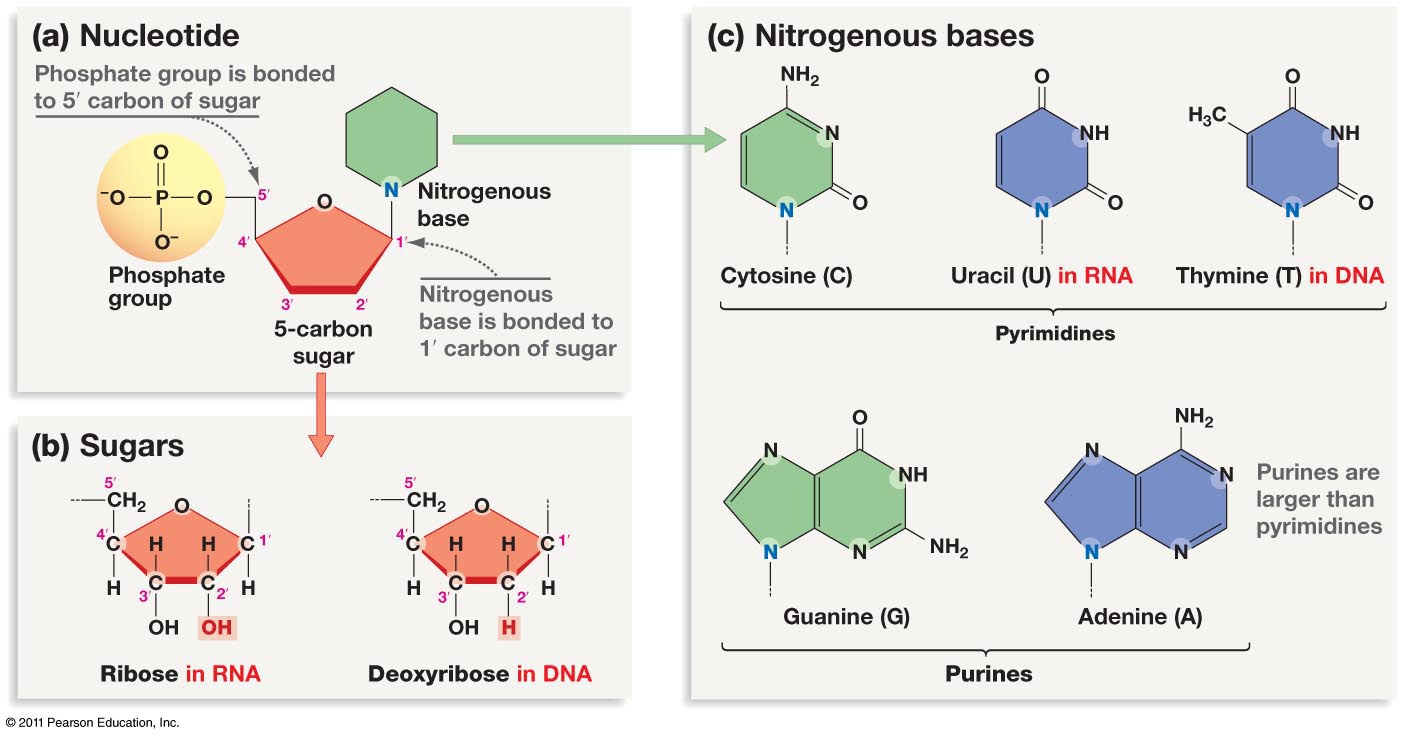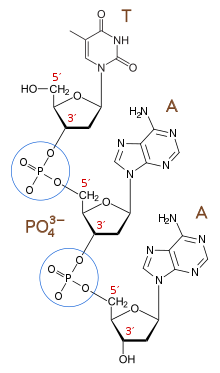1 DNA/RNA
1.1 Nucleic Acids
d-Oxy Ribone Nucleic Acid: DNA Ribone Nucleic Acid: RNA
All nucleic acids are comprised of monomer units that's synthesized together into polymers. => Just like KBhBIO101Carbs or KBhBIO101AminoAcids
1.2 3 basic parts of a Nucleic Acid
Two parts of the backbone (phosphate and sugar) + a nitrogenous base that labels what type of nucleotide this is.
1.2.1 Backbone
- phosphate group
- sugar (Ribos => sugar in RNA, di-oxy Ribos => sugar in DNA)=> In di-oby Ribos: a OH pair is replaced with a hydrogen only in one position. Hence "di-oxy"
1.2.2 nitrogenous base
- Bases in DNA
- A, T, G, C
- Bases in RNA
- A, U, G, C

Figure 1: dna.jpg
How do we make nucleic acids? Can you guess? Huh? Dehydration synthesis!
1.3 Shapes of the DNA
1.3.1 DNA/RNA Primality
- 5' => one end of an RNA/DNA part (connection from the phosphate group)
- 3' => another end of a RNA/DNA part (connection from the third carbon on the sugar counting from left)
As in… 
1.3.2 DNA/RNA Strand
- DNA is supposed to be double stranded: DNA is anti-parallel to each other => 5' to 3' backbone parallel to 3' to 5' backbone
- RNA is supposed to be single stranded, but viruses may give them in bundles so that it would avoid detection
See also KBhBIO101SenseAndAntisense
Temp copies of genome is RNA, permanent record in DNA
## The Central Dogma The process of the central dogma is a rough path by which DNA is converted into Proteins. This helps us understand how proteins are made in a cell, and also how viruses could hijack this process to make themselves.
1.4 DNA-Made Structures
In a KBhBIO101Cells, DNA is organized into different shapes depending on which KBhBIO101CellLifecycle that the cell is in. These structures help facilitate cell replication.